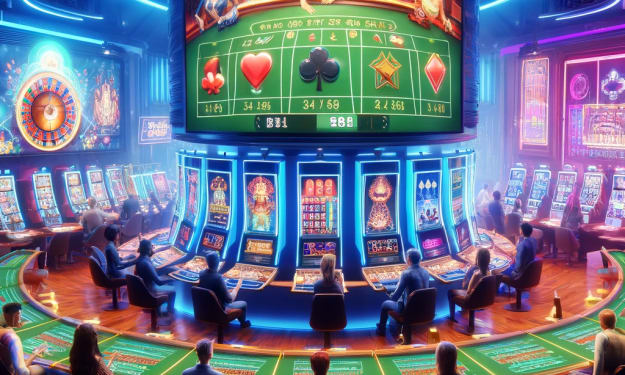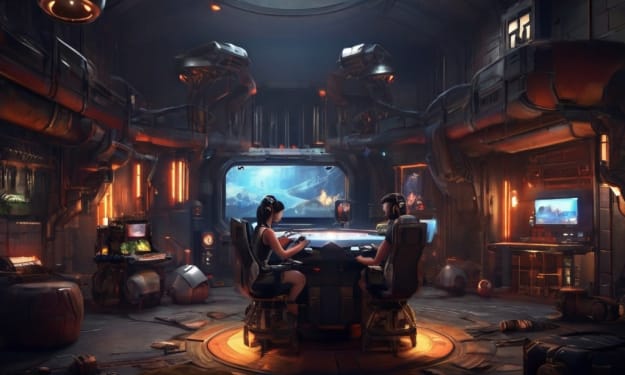The Plight of the Indie Developed Survival Video Game
Is the survival genre sustainable?

More than a decade ago, the concept of an open-world game built around the struggles of survival in a cruel environment was new and fresh. It may have seen its first inception in the early 90s with UnReal World and later again in 2006 with the Java-released Wurm Online, but the genre didn’t really become a genre until 2009, with the release of Minecraft.
The blocky world pulled gamers in – and continues to do so – with a simple set of mechanics: collect resources, build tools, construct shelter, and survive. The popularity of Minecraft proved that gamers enjoyed feeling helpless and didn’t mind starting from scratch to build their own virtual kingdom and embark on epic quests.

Mojang’s Minecraft may have looked simple with its rough textures and crude animations, but how it looked wasn’t the point. When it came to crafting and construction, the game was surprisingly deep, lending to recreations of Minas Tirtih and the entire country of Denmark. But with a few tweaks and an improved set of graphics, the core concept behind Minecraft could thrive, and with the release of the Arma 2 DayZ mod in 2013, gamers saw how the genre could evolve. As expected, they started to eat it up.
Not just an outlet for gamers to get lost in, the survival genre became a staple in the development industry. Indie developers jumped at the opportunity to create the next-best entry in the budding genre. Following DayZ (which, in 2013, received a standalone release that, at the time of this writing, is still in early alpha testing), games like Rust, 7 Days to Die, The Forest, Stranded Deep, and Ark: Survival Evolved hit the market. Anyone that follows Let’s Players like Markiplier and PewDiePie is likely familiar with these titles. Watch or even play these games for long enough and it’s easy to see that, after so long, their appeal can start to die.
For developers that can keep up with their project, this isn’t an issue. Rust, which peaked at just over 68,000 players a day near its launch, sustains 40,000 to 60,000 users daily. The Forest, which has a much smaller user-base, also remains pretty consistent with peaks in daily use occurring shortly after substantial updates (the latest of which come in late Dec. 2017 and followed by a steady 4,000 player increase in Jan. 2018).

'Stranded: The Deep'
Then, we look at a game like Stranded: The Deep. The concept is similar to The Forest and Rust, just with a greater emphasis on water-based travel and survival on the high seas. Like The Forest, Stranded started its days with just under 6,000 players on the servers. Within a month, that figure dropped to just over 1,000. Again, The Forest followed the same trend, but unlike Stranded, it was able to make a gradual comeback. The difference between the two? As evidenced by the comments in the latest Hotfix post by Stranded developer Beam Team Games on Nov. 27, 2017, it’s all about the updates.
And this is where indie developers face their greatest challenge in keeping the experience fresh and enticing players to return. Even beyond building the game, which is difficult enough, it’s rare that a title can survive when it’s not serviced regularly. Calling back to Stranded, as Steam user “Somaister” points out: “It hasn’t developed much since the beta.” The beta started in 2015.
Scrolling through Kickstarter, it’s not uncommon to come across several small developers trying their hand at the survival genre. It’s inspiring to see people hard at work on passion projects, but the genre has become a rinse-and-repeat of the same concepts. I recently happened upon Metal, a multiplayer survival game by S.E.E.D. and developed on Unity’s personal edition engine. The game aims to change things up with the promise of resource scarcity. As the Kickstart describes:
“You were born in a fallen paradise. Free to thirst, starve, freeze or dry out in its ruins. The trees have been cut down and burnt, the creatures exterminated. There are no herds of animals left to hunt, no wild fruit forests and fields to harvest. Only scattered remnants here and there, fragile and threatened.”
While the visuals of Metal are rough – understandably so considering it’s in the early stages of development – the potential for an empty world could add a level of tension that’s been missing from the genre since DayZ challenged players to survive on limited supplies. Since then, we’ve been prancing around vibrant lands robust with the essentials needed to survive. If S.E.E.D. can reach its $16,000 goal and deliver, the possibility for the next best survival game is there.

No Man's Land
Then again, Kickstarter has been a veritable dumping ground for survival games that never quite catch on. No Man’s Land launched in Sep. 2017 and has been chided for being “unfinished,” even for an early access title. The Deep Woods raised just over $500 from Dec. 2016 to Jan. 2017 and, since then, has been plagued with engine issues.
Can the survival genre sustain itself much longer? Without innovation, this plateau of retreads could be a constant that burns players out – if it hasn’t done so already – leaving a select few major players, like Ark and DayZ, left standing alone for the long haul.
About the Creator
Mark LoProto
Writer | Avid Gamer | Horror Enthusiast | A Voice for All Industries
Writing and building communities are my passions
Featured on all corners of the Internet






Comments
There are no comments for this story
Be the first to respond and start the conversation.